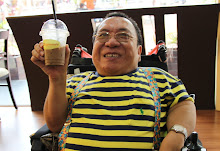PAGE TURNERS; PIECES OF WRITTEN HISTORY
521 words
27 January 2008
Bangkok Post
O5
English
(c) 2008
The secrets of Wat Si Chum in Sukhothai are tackled in new book
KRITTIYA WONGTAVAVIMARN
Past Lives of the Buddha - Wat Si Chum - Art, Architecture and Inscriptions describes the unique character and value of Wat Si Chum, one of the main monastic sites located northwest of Sukhothai and outside the city wall.
Wat Si Chum has been an object of fascination for several generations of scholars. The large mondop - a largely unadorned masonry cube with no windows and a single entrance - which dominates the site has no exact replica elsewhere in Sukhothai, Si Satchanalai or Kamphaeng Phet. The plain exterior, however, conceals mysteries: When was this unique structure built - by whom and why? Why was the site chosen? Was the temple ever completed or is it unfinished? If the latter is the case, why was it left unfinished?
The size of its Buddha image is exceptional and its captioned jataka (former lives of Gautama Buddha) carvings are as unique as its interior corridors and stairways.
Sukhothai Inscription No. 2, as the inscriptions have been named, found inside a staircase, has confronted epigraphists with insoluble difficulties. Many doubts remain unsolved: What is the significance of the 86 inscribed stone reliefs depicting jatakas, which are among the earliest surviving examples of Thai figural and narrative art, and are inscribed with one of the earliest series of inscriptions in the Thai language? How many jatakas did the founders of the temple intend to depict? Why are the jataka slabs placed where they are? Is this their original position?
The puzzles it poses have generated lively and sometimes acrimonious debate. But to date no sustained study of its art, design and inscriptions has been attempted. This book presents the latest evidence and proposes a new interpretation with the first-ever English translation of the inscriptions and photographs of the reliefs supplemented by 19th-century jataka paintings from Wat Khrua Wan in Bangkok.
It also includes essays on all aspects of the temple and a discussion of the significance of jatakas in international Buddhist literature, art and ideology.
The book devoted to Wat Si Chum is the first multidisciplinary study to advance knowledge of the ancient Kingdom and to inspire similar studies of other monuments to the understanding of the complex culture of Sukhothai.
A Sanskrit and Pali scholar, Peter Skilling edited this book with four other scholars: Pattaratorn Chirapravati, a historian of Southeast Asian art and now assistant professor of Asian art and director of the Asian Studies Programme at California State University; Pierre Pichard, an architect with L'Ecole Francaise d'Extreme-Orient for over 30 years; Prapod Assavavirulhakarn, assistant professor and head of the Department of Eastern Languages at Chulalongkorn University; and Santi Pakdeekham, a lecturer in the Department of Thai and Oriental Languages at Srinakarinwirot University.
Past Lives of the Buddha -- Wat Si Chum _ Art, Architecture and Inscriptions
Edited by Peter Skilling, Pattaratorn Chirapravati, Pierre Pichard, Prapod Assavavirulhakarn and Santi Pakdeekham
River Books, 296 pages with 390 colour illustrations and 30 plans and maps.
2,550 baht at all leading book shops.
ISBN 978-9749863459
Subscribe to:
Post Comments (Atom)



2 comments:
The Buddhapada section could have been better. See The World of Buddha Footprints
I will be happy to read the symbos for you, in Pali, and give Thai and English notes.
Post a Comment